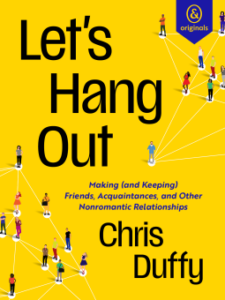The Hugo Award category that’s presently known as Best Related Work began in 1980 as Best Non-Fiction Book, and in 1999 became Best Related Book. In 2010 the name took its modern form, as fans recognized that the field of science fiction and fantasy is a diverse one, and sometimes award-worthy work comes in an unusual shape or form. In a way, Best Related Work has become the Hugo Award for Everything Else. In the last five years, winners in this category have included the whole project of an Archive of Our Own, an acceptance speech at the previous year’s Worldcon and a translation of a thousand-year-old poem, as well as two non-fiction books. Finalists took an even more expansive view of both “work” and “related.” Over the same period, they have included documentary films, a convention, a convention “fringe,” critical examination of an animated series presented in video form, and a translation project, all in addition to the more expected books and essays.
This admirable creativity and inclusiveness has led to at least two tensions. First, whether the books for which the category was originally created would get crowded out by works that potentially had a wider appeal. Biographies, book-length collections of critical essays, and in-depth examinations of specific topics (e.g., Queers Dig Time Lords: A Celebration of Doctor Who by the LGBTQ Fans Who Love It, a 2014 finalist) are less likely to find large audiences than an online essay on controversies of the day. Would Hugo nominators lean on the “related” to such an extent non-fiction books might need their own category again? Second, how are voters to choose the best among such disparate finalists? When I was a voter for the 2021 awards, the category included one non-fiction book, two conventions (well, one and whatever an unauthorized fringe of Worldcon counts as), a long video of criticism, an online essay, and a translation of Beowulf. That was not so much comparing apples and oranges as it was apples and cumulonimbus cloud formations.
The answer to the first is to wait and see, I suppose. The evolution of the Hugos is like any other kind: slow. Since the low ebb of 2021, more non-fiction books have made it into the list of finalists. Last year, four of six finalists including the winner were books. This year it’s five of six, though one is almost entirely pictures. The answer to the second is idiosyncratically, as the voters do for every other category. It’s silly to pretend there’s one set of criteria for Best Novel or Best Short Story; it’s hopeless to pretend that there could be one way of selecting the best among so many different kinds of work. The only course is to trust to the voters and their ability to recognize excellence when they see it. For my part, I am glad that no more conventions have been selected as finalists, and I am glad that projects or documentation of projects have become sporadic rather than perennial. My votes reflect my idiosyncratic approach to topics and media; if I am shortchanging something amazing, I hope the other voters will make up for it.
Which brings me to 2024, with notes on each Related Work finalist in order of my ascending preference.










